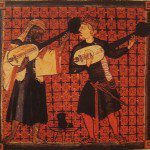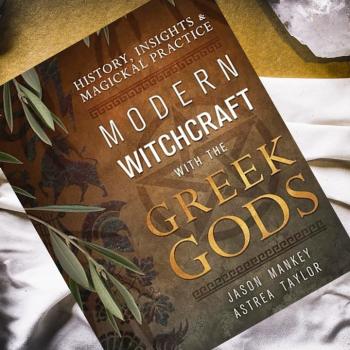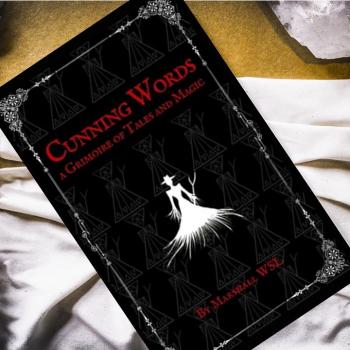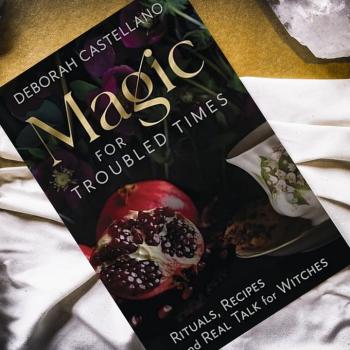
One of the most striking characteristics of Modern Paganism is its sense of nostalgia. Many, if not most, contemporary forms of Paganism have embedded in them a kind of nostalgia that is often quite distinct from the actual historical past.
Nostalgia does not simply replicate memory, but rather by denying and degrading the present as it is symbolically constructed, brings an idealized past, as imagined from the present, into the site of immediacy, presence and authenticity. It is essentially a Romantic ideal; the past is replicated and reconstructed according to psycho-symbolic and metaphorical impact and this serves as the means to reconstruct and redefine the relationship to the present with an eye to the future. History is thus redefined as an expression of consumable cultural identity or ideological fashion, manifested through a feeling of pastness rather than a sense of historicity or identification with an actual past. (Waldron, 2005, p. 38-39)
Nostalgia of this form allows for the Modern Pagan to dramatically manipulate historical data since the intention is often not to exactly replicate the past, but to create a sense of distance between contemporary life and authentic Pagan practice. Indeed, Sarah M. Pike points out that “[c]onstructing identity by looking backward and bringing an imagined past into present vital life has been an important aspect of Neo paganismsince the first American Neopagan groups took shape in the 1960’s” (2001, p. 171).
I would argue that this particularly Pagan sense of nostalgia generally falls along two literary conventions, the Gothic and the Romantic.
The Gothic form first appeared in 1764 with the publication of Horace Walpole’s The Castle of Otranto, which opens with the sudden death of a bridegroom under an enormous and unexplained casque, a monstrous a helmet, and proceeds at breakneck pace from there though all sorts of bizarre twists and turns. From there, the Gothic genre was off and running. The Gothic is concerned with strange and uncanny happenings, indeed, it is a sort of medievalism, an attempt to return to a time when the world was strange and threatening, or at the very least, still very alien. Gothic literature is often very concerned with spirituality, mysticism, and magic. Walpole’s Castle is the setting for all sorts of mysterious happenings, and the entire plot revolves around the enactment of really rather baffling curse. Matthew Gregory Lewis’ The Monk: A Romance, published in 1796, picks up the issue of magic in earnest, and throws itself headlong into railing against the dangers of the occult and spirit communication (by which, bizarrely, the hero is destroyed and the vixen is delivered).
While early forms of the Gothic novel tended to demonize magic and mysticism, Victorian and later Edwardian writers had inverted that schema completely. For example, The Centaur (published in 1911 by Algernon Blackwood) revolves around the redemption of man through communion with the divinity of the natural world. The majority of Blackwood’s work explores similar themes (though one of my favorite of his works, The Damned begins as a rather straightforward ghost story only to twist sideways at the very end with the sudden appearance of a cult that looks remarkably like the Golden Dawn that arrives to save the day). Of further interest are the writings of Lord Dunsany, particularly his short stories. Dunsany’s writings explore folklore and fairytale themes and tend to be just as dark. The heroes of both Dunsany’s and Blackwood’s works, however, are all either familiar with mystical, magical workings, or else eventually adapt to and accept the uncanny world that they have been dropped in to.
The nostalgia that these writers manifests is not at all concerned with any historical past, but in capturing a sense of otherness and distance from the present. The tendency of the Gothic genre is to indulge in alienation. In the Gothic world, humanity is the interloper, suddenly thrust up against forces over which it has no understanding and which it cannot control; it is only by giving in to and indulging in the Gothic world that humanity can be saved.
Unlike the often deranged Gothic, the Romantic tends to drift towards idealization and simplification. Where, in the Gothic genre, the natural world is often threatening and dark, the nature of the Romantic movement is warm, accepting, and free from pain or care. The Romantic movement blossomed in the late nineteenth century in no small part as a reaction to the increasingly cultural potency of industrialization and the sciences. The Romantic movement was largely an attempt to rehabilitate the natural world from what many perceived as the overzealous expansion of industrial civilization.
Romantic literature and poetry was nearly all caught up with the spiritualization of the natural world, and Pagan themes were, of course, the obvious means of expression. Authors like Schiller, Goethe, Keats and Shelley all were influential in exploring and recuperating Pagan themes. Indeed, many Romantic poets took up Paganism to directly attack Christianity. The following exerpt from Hertha, by Algernon Charles Swinburne, illustrates this point:
More fair than strange fruit is
Of faiths ye espouse;
In me only the root is
That blooms in your boughs;
Behold now your God that ye made you, to feed him with faith of your vows.In the darkening and whitening
Abysses adored,
With dayspring and lightning
For lamp and for sword,
God thunders in heaven, and his angels are red with the wrath of the Lord.O my sons, O too dutiful
Toward Gods not of me,
Was not I enough beautiful?
Was it hard to be free?
For behold, I am with you, am in you and of you; look forth now and see.Lo, winged with world’s wonders,
With miracles shod,
With the fires of his thunders
For raiment and rod,
God trembles in heaven, and his angels are white with the terror of God.For his twilight is come on him,
His anguish is here;
And his spirits gaze dumb on him,
Grown grey from his fear;
And his hour taketh hold on him stricken, the last of his infinite year.
Swinburne’s writing in particular is of great importance to the formation and solidification of Modern Paganism, in fact, as Ronald Hutton notes: “Swinburne’s influence upon modern Paganism can hardly be overestimate; he was much admired, and quoted by (to name but three figures who will feature prominently in its story) Aleister Crowley, Dion Fortune, and Gerald Gardner” (Hutton, 1999, p. 26).
The nostalgia of Romanticism is caught up in freedom, comfort, and self-expression. In as much as the Gothic genre invented a dark and mysterious past, the Romantic genre invented one filled with sunlight and dewy meadows. I assert that both forms of nostalgia are present in the Modern Pagan movement, in no small part because of the impact of literature on its formation. Often, when lacking real memory of the past, we have turned to literature to help us reconstruct and recreate a history that we have never really known. Indeed, “Nostalgia refers to the past as idealized and imagined through a combination of memory, metaphor, symbolism and desire, and as such is dependent on the irrecoverable nature of the actual past for its emotional impact and appeal” (Waldron, 2005, p. 38).
References:
Hutton, R. (1999). The triumph of the moon: A history of modern pagan witchcraft. New York: Oxford University Press Inc.
Pike, S. M. (2001). Earthly bodies, magical selves: Contemporary pagans and the search for community. Berkeley and Los Angeles: University of California Press
Waldron, D. (2005). Witchcraft for sale! commodity vs. community in the neopagan movement. Nova Religio: The Journal of Alternative and Emergent Religions, 9(1), 32-48. doi: 1541-8480
Swinburne, A. C. (n.d.). Hertha by Algernon Charles Swinburne. Retrieved from http://www.poetryfoundation.org/poem/174557
Syncretic Electric is published on alternate Fridays. Subscribe via RSS or e-mail!













